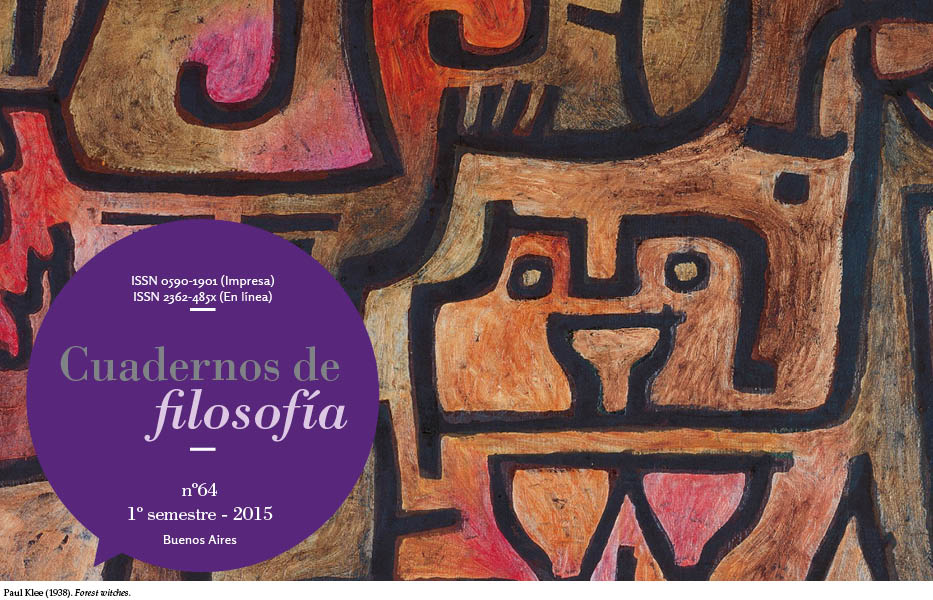Plotino, sobre el viviente universal y el viviente individual. Un esbozo preliminar al estudio sobre el tema de la sensación y de las pasiones
Abstract
Within the framework of a broad notion of life, which acquires different and hierarchically ordered meanings, Plotinus draws upon the traditional definition of a living being as a unity of body and soul. He applies this definition to both the universal living being and the particular one. While both are constituted by body and soul, across the two body and soul differ in nature, relate to one another differently, and constitute distinct substances (an immortal substance in the former case, a mortal one in the latter). In order to shed light on this difference, I. as a preliminary step, we examine the notions of universality and particularity, which helps clarify the nature of the universal soul and the partial soul (partial soul = world soul and particular or individual soul); II. we then move on to illustrate the process of constitution of the universal living being, i.e. the way in which the world soul relates to the body of the world; III. thirdly, we describe the constitution of the individual living being. The following vocabulary thus emerges: universal or “total” soul = hypostatic soul world soul = partial soul particular or individual soul = partial soul universal living being = body of the world animated by the world soul particular or individual living being = particular body animated by a partial soul. Following one of the theoretical paths traced in the Enneads, I will show that in the case of the universal living being, the soul produces the body of the world and defines its general structure as a single whole. By contrast, in the case of the individual living being, the soul does not produce the body, but is presented with an already qualified body.Downloads
Los autores/as que publiquen en esta revista aceptan las siguientes condiciones:
Los/as autores/as [traductores/as] conservan los derechos de autor/a y ceden a la revista el derecho de la primera publicación, con el trabajo registrado con Licencia Creative Commons Atribución-NoComercial-CompartirIgual 4.0 Internacional, que permite a terceros utilizar lo publicado siempre que mencionen la autoría del trabajo y a la primera publicación en esta revista.
Los/as autores/as pueden realizar otros acuerdos contractuales independientes y adicionales para la distribución no exclusiva de la versión del artículo publicado en esta revista (p. ej., incluirlo en un repositorio institucional o publicarlo en un libro) siempre que indiquen claramente que el trabajo se publicó por primera vez en esta revista.
Se permite y recomienda a los/as autores/as a publicar su trabajo en Internet (por ejemplo en páginas institucionales o personales).
Políticas de detección de plagio
La colaboración de los y las editores/as, autores/as y evaluadores/as de esta revista y la guía de ética de los procesos editoriales se rige por los Principios de transparencia y buena práctica en publicaciones académicas del Committee on Publication Ethics (COPE) disponible aquí.
Todos los artículos enviados a esta publicación serán supervisados mediante una búsqueda online.







